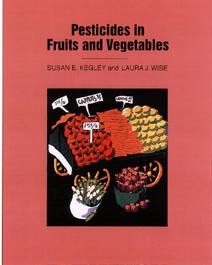
Pesticides in Fruits and Vegetables
This introductory module explores the structure/solubility relationships of organic compounds, explains how to extract pesticide residues from fruits and vegetables, analyzes the extract for pesticide content using gas chromatography, and uses the data collected as a basis for discussion about the issues surrounding pesticide regulation. Intended for use in the laboratory portion of an introductory environmental chemistry or general chemistry course.
Summary
This introductory module explores the structure/solubility relationships of organic compounds, explains how to extract pesticide residues from fruits and vegetables, analyzes the extract for pesticide content using gas chromatography, and uses the data collected as a basis for discussion about the issues surrounding pesticide regulation. Intended for use in the laboratory portion of an introductory environmental chemistry or general chemistry course.
Resources
Table of Contents
Preface
Introduction
1. Organochlorine Pesticides
2. Solubilities of Organic Compounds
3. Fundamentals of Organic Extraction
4. Supercritical Fluid Extraction
5. Gas Chromatography as a Tool for the Analysis of Organic Compounds
6. Risk Assessment and Human Health
7. Pesticide Regulation and Tolerance Levels
8. The Great Debate
A. Tolerance
B. Pesticide Residue Survey of Produce from 1989 to 1991
Index
Reviews
“Not only do these materials give excellent examples of what it takes to do credible environmental science, but also of what the societal context of this activity might be.”
-Thomas G. Dunne, Reed College
